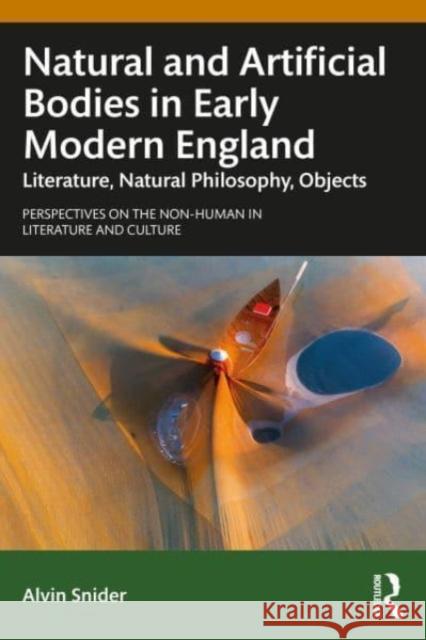Natural and Artificial Bodies in Early Modern England: Literature, Natural Philosophy, Objects » książka
Natural and Artificial Bodies in Early Modern England: Literature, Natural Philosophy, Objects
ISBN-13: 9781138949874 / Angielski / Twarda / 2024 / 208 str.
Natural and Artificial Bodies in Early Modern England: Literature, Natural Philosophy, Objects
ISBN-13: 9781138949874 / Angielski / Twarda / 2024 / 208 str.
(netto: 624,58 VAT: 5%)
Najniższa cena z 30 dni: 477,23
ok. 22 dni roboczych
Dostawa w 2026 r.
Darmowa dostawa!
This book brings contemporary ways of reconceptualizing the human relationship to things into conversation with seventeenth-century writing, exploring how the literature of the period intersected with changing understandings of the conceptual structure of matter, and how human beings might reconfigure their place in a network of non-human relations. Focusing on texts that cross the frontier between literature and science, Snider recovers the material and body worlds of seventeenth-century culture as treated in poetry, natural philosophy, medical treatises, and prose fiction. He shows how a range of writers understood and theorized "matter," "bodies," and "spirits" as characters in complex and sometimes bizarre scenarios involving human relationships to the phenomenal world. The logic that made matter subject to uniform theorizing facilitated a crossing of boundaries between the natural and the artificial, human and nonhuman, animate and inanimate. Drawing on insights from science studies and new materialism, the book assembles a gallery of writers seldom considered together, including Robert Herrick, John Milton, Margaret Cavendish, and Robert Boyle. This range will appeal not only to students of English literature but to anyone interested in how science made the body-machine a persistent figure of explanation at precisely the time when distinctions between the natural and the artificial were undergoing reformulation. This study builds on recent work in the history of science to mine a rich vein of canonical and archival texts on the interplay of human and non-human worlds, and will appeal to literary scholars in fields of British literature between 1600 and 1800, cultural historians, philosophers, and anyone concerned with ecocriticism or the history of the body.











